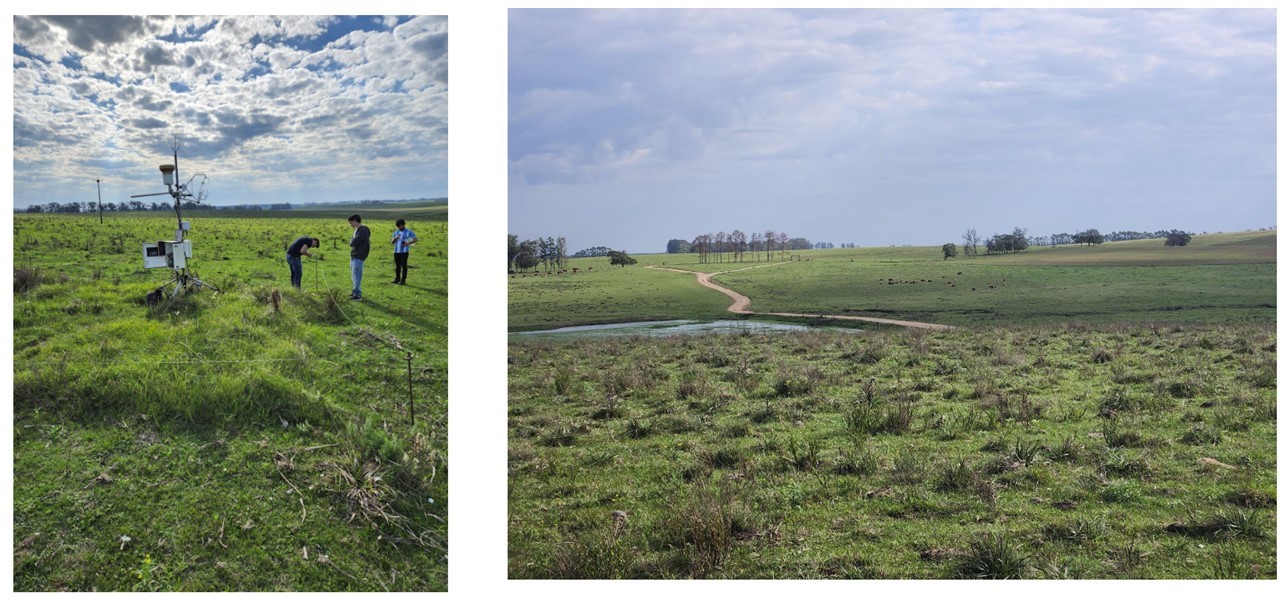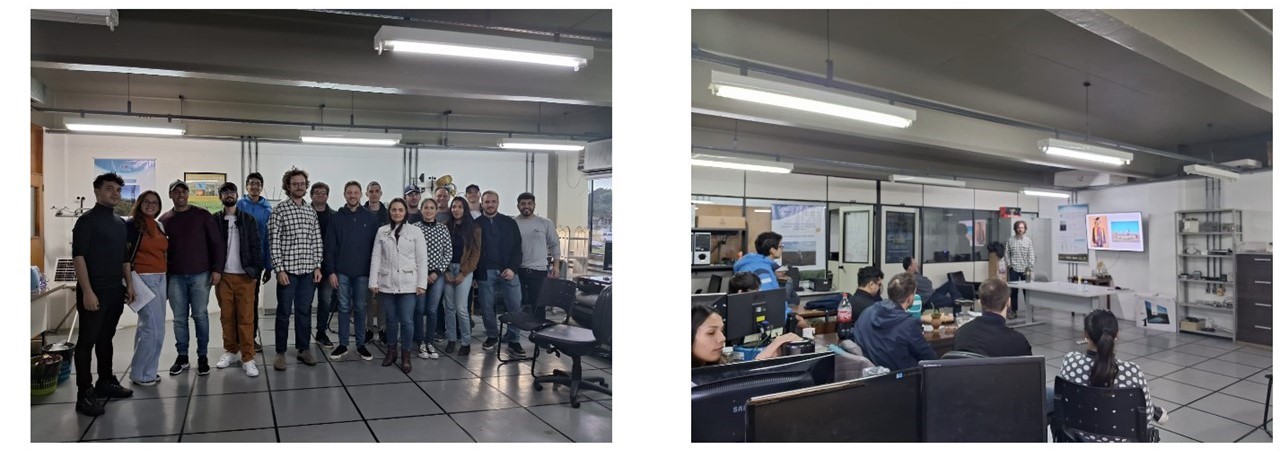Nic Katz, recipient of the 2023 Secondment Program award, has completed the program and wrote the following to share with the FLUXNET community:
Departing from the research station where I was based in Gamboa, Panama, I made my way from the tropics to the Pampa Grasslands of southern Brazil. Here, I would meet Dr. Regina Roberti, head of the GEE (Gases do Efeito Estufa) lab at Universidade Federal do Santa Maria (UFSM). The GEE lab leads inquiry at the confluence of micrometeorology and greenhouse gasses in the Pampa biome. Here, increasing conversion of grasslands to soy and rice agriculture has caused a shift in local carbon dynamics resulting in reduced carbon uptake.
I joined the GEE lab in their mission to enumerate a carbon budget in grazed native Pampa grasslands by characterizing variation of ecosystem metrics between drought years and especially wet years, driven by the Southern Oscillation. The GEE lab has employed two flux towers in managed pastures within the Pampa region. The first of which lies just outside the town of Camobi, which housed both myself and UFSM. The second can be found just a few hours away by car, approaching the Brazilian border with Uruguay. We would visit both sites in my first week at the GEE lab in order to check the instrumentation and to give me an opportunity to see the towers in action.

Figure: Graduate students ascend the Santa Maria Flux tower to perform maintenance
We sipped yerba mate as we made our way towards the Uruguay border to check in on the GEE lab’s second Flux tower, where lab members would perform maintenance and brief me on their function. As we traversed rolling Pampas, I was taken aback by the region’s similarity to some of the grasslands of central California, where I had spent many of the most formative years of my youth. With the project a stark transition from the bulk of my research which has centered around conservation ecology, this familiarity pulled my attention back to my purpose for attending: to capitalize on FLUXNet’s unique set of tools for capturing the details of ecosystem function, and thereby ameliorate our knowledge of grassland function and management.

Figure: (Left) Graduate students perform maintenance on the electric fence around the Acegua flux tower, located near the southern border of Brazil and Uruguay. (Right) Representative native Pampa grasslands pasture.
After a fruitful journey to our second flux tower, including a brief border crossing to visit the small Uruguay/Brazil border town of Acegua, we made our way back to Camobi. Here, I would spend the next week constructing an analysis of two divergent years of data from the Santa Maria flux tower. Working closely with Dr. Roberti and her team, I compared key metrics of ecosystem function including gross primary productivity, ecosystem respiration, and net ecosystem exchange. We compared metrics between 2015, a wet La Niña year, and 2022, a dry El Niño year. We explored micrometeorological variables at the site to explore the drivers of differences in productivity and respiration between years.
Working with the team at GEE UFSM provided a unique opportunity for disciplinary cross-pollination. The GEE team at UFSM focuses on micrometeorological data to explain variation in carbon fluxes. This framework differed substantially from my past experience in a way that allowed me to build on my understanding of inquiry into ecosystem function. It provided an opportunity to engage in conversations with lab members from diverse perspectives as we dove into the fundamental processes of grassland ecology, engaging concepts from plant physiology through to atmospheric sciences. It was eye-opening to work across-the-table with researchers engaging in fundamentally similar inquiry from diverse areas of expertise, and provided me new perspectives on this body of research.
My analyses culminated in a presentation shared with the Department of Physics at UFSM, where I not only had the opportunity to share my research findings, but also a bit about my education and research history as an ecologist from the U.S. The result was a uniquely enriching experience wherein we shared stories connecting and exploring differences in our educational cultures.

Figure: (Left) GEE lab and the Physics Department at UFSM, (Right) Presenting findings and educational history with UFSM Physics
I am excited to welcome a few members of the GEE lab to visit the U.S. this fall for the American Geophysical Union meeting to share our findings. I would like to extend my gratitude to the GEE Lab at UFSM for their remarkable hospitality and to the FLUXnet Secondment program for providing support to make this experience possible.
